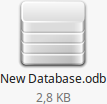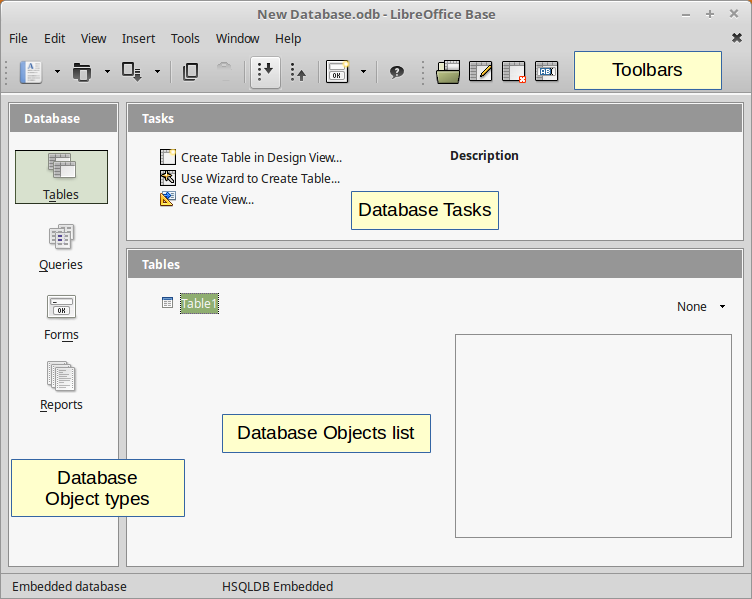Introduction to Base
Introduction to Base
What is LibreOffice Base
LibreOffice Base is a database software, similar to Microsoft Access, which provides a graphical interface for working with databases. In addition, Base contains a version of it’s own database management system (HSQLDB) that can be used to create small, self contained, single user database applications. Furthermore Base can connect to a variety of external database systems such as MySQL or simply to a file data source (spreadsheet or text file). LibreOffice Base is just the front end allowing us to tie into the actual database.
Creating a database
To create a database start LibreOffice Base from your system application start menu or use LibreOffice Start Center.
Step 1
Every time you start Base the Database Wizard appears.

In the first step of the Database wizard you have the following options:
- Create a new database
- Open Existing database stored on your computer.
- Connect to an existing database created with other applications or database engines. For example it can conect to an SQL database.
Select the first option to create a new database using the embedded database system HSQLDB.
Step 2
In the next step leave the default options. Registering a database in LibreOffice means that other components can have access to the data. For example you can access data from a Calc spreadsheet or from a Writer document when using the Mail Merge function.
Make sure the option Open the database for editing is selected and click Finish.

Step 3
Before opening the database for editing, Base will ask you to name and save your new database. Database files in Open Document Format are stored with the *.odb extension. This file format is actually a container of all elements of the database, including forms, reports, tables, and the data itself.

Base main window
Base main window besides the Title Bar, Main menu and Toolbars, consists of three window panes: Database Object types, Database Objects list and Tasks.

Database Objects Types
Databases in LibreOffice Base are composed of four objects:
- Tables
- Queries
- Forms
- Reports
Together, these objects allow you to enter, store, analyze, and compile data however you want. We will explain these objects in detail in the next lessons.
Database Tasks
For each database object type, the Tasks window lists the available tasks along with a description. For example the tasks for Tables include to Create a Table in Design View or Use Wizard to Create Table.
Database Objects List
All the objects that we create for a given type are listed in this Window. From there you can open, edit, rename or delete an object.